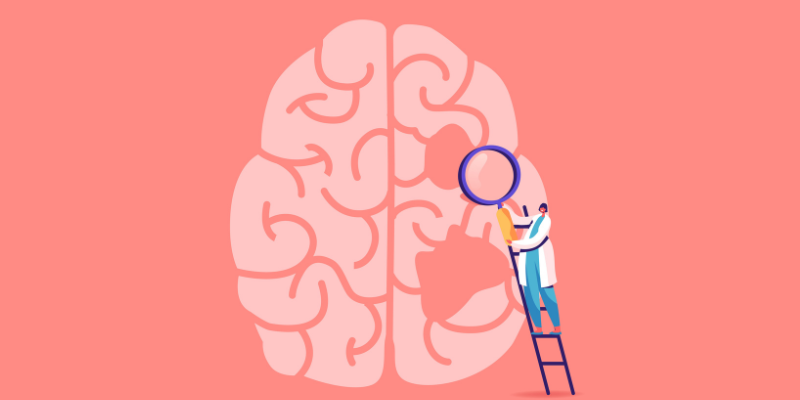By Amanda N. Wegner
With about 13 million women in the U.S. living with Alzheimer’s disease or caring for someone who has it, you likely know someone touched by this terrible disease.
Alzheimer’s, the most common cause of dementia, disproportionately affects women — almost two-thirds of American seniors living with the disease are women. We also make up 60% to 70% of unpaid caregivers for those with Alzheimer’s and dementia.
June is Alzheimer’s & Brain Awareness Month, making it the perfect time to share practical prevention tips and some exciting news about the future of Alzheimer’s research and interventions.
REDUCING YOUR RISK
We know that more than two-thirds of Alzheimer’s cases and other dementias are associated with modifiable risk factors, says Lisa Groon, senior health systems director at the Alzheimer’s Association. The top three factors are midlife obesity, lack of physical activity and low educational attainment. In turn, moving your body, eating nutritional foods and challenging your brain can help you reduce your risk of an Alzheimer’s or dementia diagnosis.
Blood pressure management is also critical, and women who plan to have children should especially take note. Groon explains that women with hypertension (high blood pressure) or those who experienced preeclampsia during pregnancy have a 1.8 times higher risk of Alzheimer’s. This is because high blood pressure, which impairs blood flow to the brain, can increase beta- amyloid, a protein associated with Alzheimer’s that can create brain changes affecting memory and thinking.
“Early hypertensive episodes can impact you later in life, 20 to 30 years later. That makes prenatal care and early treatment and detection of high blood pressure in pregnancy incredibly important,” says Groon.
She adds that keeping tabs on your blood pressure health is vital in pregnancy and throughout life. Aim to keep your systolic blood pressure, which is the top number in a blood pressure reading, under 120.
AN EXCITING NEW TREATMENT OPTION
Although current medications cannot cure Alzheimer’s, there is hope in new treatments, which address the underlying biology of the disease. Additionally, other medications may help lessen symptoms, such as memory loss and confusion.
In early January, the Food & Drug Administration approved Lecanemab, the first treatment in history for Alzheimer’s. The drug has been shown to moderately slow cognitive and functional decline in early stages of the disease.
“This is very encouraging at the Alzheimer’s Association,” says Groon. “It allows us to look at different ways to impact the disease from a biological perspective. And, more importantly, it offers hope and time for conversations about plans for the future — conversations that families haven’t always had time to have.”
While the drug has been approved, organizations like the Alzheimer’s Association are working diligently to ensure it is available and covered by insurance.
ACT EARLY
Interestingly, the Alzheimer’s Association has seen an increase in younger women participating in events and educational activities. Groon attributes this to the disease’s disproportionate effect on women and many women in the sandwich generation that are caring for both children and possibly a parent with the disease.
“I believe personal connection and new research is what’s leading to the stronger interest in this topic,” says Groon. “Women are strong advocates and may feel more comfortable telling stories about their experiences. That leads to more empowerment and engagement, and progress toward a world without dementia.”
STUDYING AHEAD
Through the AHEAD study, researchers are examining whether Lecanemab can be used as a preventative medication.
“There is no known preventative measure for Alzheimer’s disease,” says Olivia Deering, a clinical research coordinator with The University of Wisconsin-Madison’s AHEAD study and a community educator with the Alzheimer’s Association. “With all the changes that occur in the brain, it can be years before someone develops symptoms, and it would be huge to find a preventative to stop brain changes and prevent Alzheimer’s.”
Deering worked as an EMT before joining the study, and in that role, she saw the struggles older adults with Alzheimer’s and dementia face. And her work with the AHEAD study became personal after her grandmother was diagnosed with Alzheimer’s.
The study is recruiting participants as young as 55 years old who are at risk of developing Alzheimer’s disease. It is especially important to recruit underrepresented groups because some communities such as African American/Black, Latino, or Asian American and Pacific Islander individuals, may be at a higher risk of developing Alzheimer’s disease.
“Our participants are rock stars,” says Deering, “and it’s amazing to see people come together worldwide to try to find a preventative tool against Alzheimer’s.”
Learn more about the AHEAD study and eligibility at adrc.wisc.edu/ahead-study.




